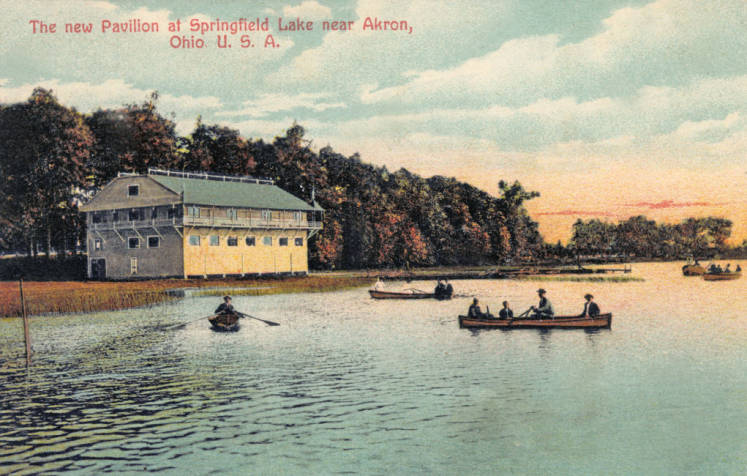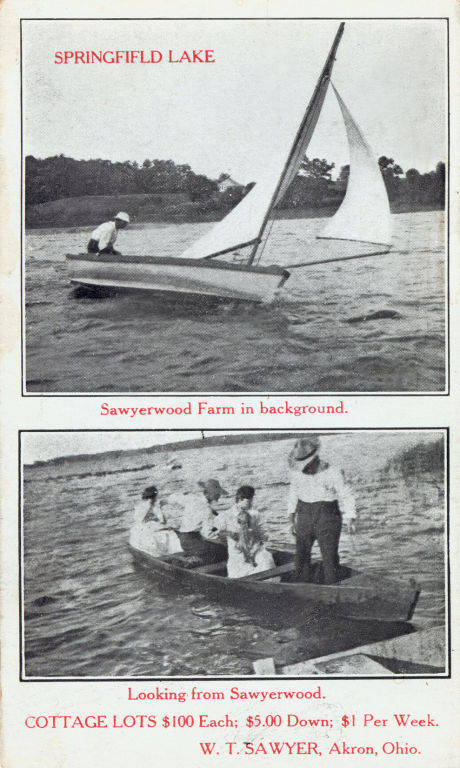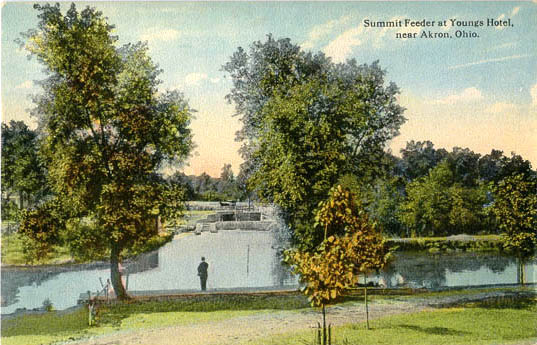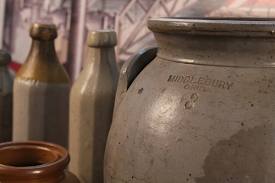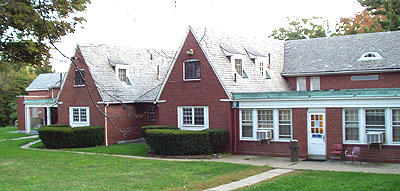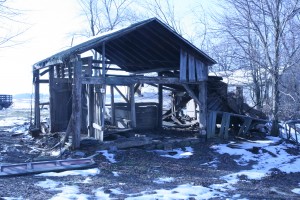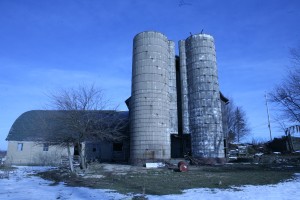Summer Fun:
Springfield Lake was an area for city dwellers to retreat and recreate. The idea of leisure began to develop in the 1890s, as factory workers were encouraged to spend some
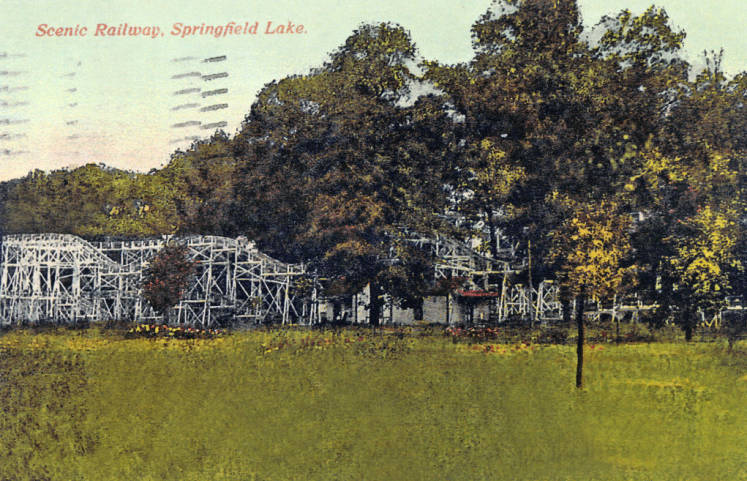
Scenic Railway Rollercoaster. http://summitmemory.org/cdm4/document.php?CISOROOT=/clinefelter&CISOPTR=1862&REC=4
time in recreation. Electric trains and railroads were reasonably priced and electric trains on the Akron Canton line brought right to Springfield Lake. The picnic groves and bathing beaches were popular but a big attraction was Springfield Lake Amusement Park, built in 1914. It included all sorts of rides, a pony track, boating and dancing. The park operated until 1930 when the rollercoaster, “Jack Traster’s Radio Streak” brakes failed and the crash injured 13 people.
Boating was also popular; the lake steamer called the Chautauquan, was purchased from the Silver Lake Amusement Park and transported to Springfield Lake. It could carry an orchestra and 400 people. In winter ice boating or ice-sailing was popular. Because there was easy public transportation, people from Akron and Canton could spend the day in the area, even coming to pick blueberries on the Young Farm, now part of the Park.
Summer camps and cottages were popular and the recreational opportunities at Springfield Lake encouraged people to venture out of the city for vacation, for the summer or for the day. The mayor of Akron, W.T. Sawyer developed a summer cottage
village, Sawyerwood on farmland he owned. The cottages were small and Sawyer promoted it as a vacation village on the north shore of the lake. “You have put off having a good time too long already. Take your family there for the summer…let them run wild in the woods…the children can learn to swim.”
As most resort areas, Springfield went through tough times during the depression and Sawyerwood became a depressed area. Isolation increased when U.S. Route 224 was widened, separating the cottage community from the lake. Rebuilding and rehabilitation in recent years have improved the area and the lake activities are more prominent.
Commerce:
Three important commercial and business aspects of Springfield were the water leases to draw water from the lake into the Middlebury and Akron area, the abundance of high quality clay, and in 1915, the opening of the Springfield Lake Sanitarium for treating tuberculosis.
Water:
In Akron, there was a concern for a reliable water supply for the mills along the Little Cuyahoga River. In 1837 a Mr. Garl allowed a mill owner to dig a trench from the lake to his mill to the north, downstream from the lake. The idea spread and the Middlebury Hydraulic Company was formed in 1838 with permission from the state to use the water. By 1903 property owners, concerned with loosing too much water in the lake took the matter to court and won some guidelines for the amount of water that could be withdrawn. Later the water rights were acquired by the Goodyear Tire and Rubber Company.
Clay:
Clay was first discovered between 1825 and 1828 by a Mr. Fisk on farmland. Early histories praise the quality and size of the beds. Called “potters” clay, it was best suited for practical stoneware such as jugs, crocks, churns, water jugs and pipes, all in high demand on farms and small towns. News of the clay deposits encourage development of clay industries and Middlebury in the northwest corner of the township became a pottery center, using clay brought from the southern part of the township. Middlebury was later annexed to Akron.
Public Health:
In 1908 the state declared that people infected with tuberculosis (TB) could not be treated in general hospitals and counties had to provide specific centers for treatment. Summit County built on 100 acres south of Springfield Lake. The sanitarium was built on high ground as fresh air, rest and good nutrition was considered the only “cure”. The Springfield Lake Sanitarium was later renamed Edwin Shaw Hospital. After a cure for TB was found, the facility became a rehabilitation hospital. In 2009 Edwin Shaw vacated the aging buildings and moved the facility to Cuyahoga Falls.
Historic Farms:
Two historic farmsteads were formerly located in the park. Farmed from 1860’s, they were demolished and were not historically significant. They were in poor condition and posed a hazard for a park.

